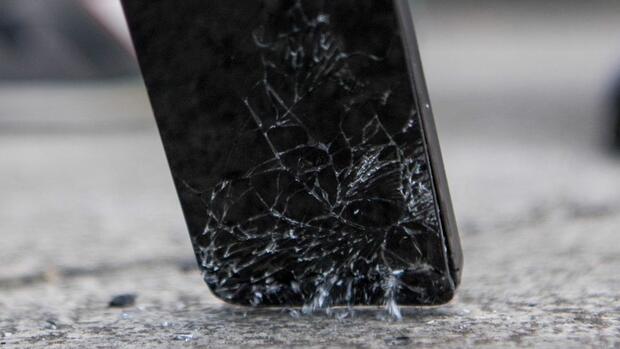![]()
Plastic Films
“Although simple plastic films are pleasantly thin and very cheap, they only protect the smartphone from scratches and lighter blows,” says Sebastian Klöß from the IT industry association Bitkom. Such a slide could not hold much more. Even key scratches are already too much for many plastic films. Basically, the following applies: films made of polyethylene are stronger than those made of polypropylene.
In addition, plastic films have to be replaced quite regularly, as they scratch quickly, says Klöß. Another disadvantage is that plastic films are usually not grease-repellent: “Protective layers of glass usually have this property.” – Similar to smartphone displays without extra protection applied. “In this way, fingerprints do not remain visible on them, but disappear directly again,” says Klöß.
Plastic films for the smartphone can be matte or clear. According to Ulrike Kuhlmann from the “c’t” trade magazine, which option you choose is a matter of taste: “With clear films, you have all the reflections that you would otherwise have on the display, also on the film. Sometimes even more.”
A frosted surface prevents this, says Kuhlmann. At the same time, however, the display appears somewhat more diffuse and less high-contrast due to frosted films. So if you like to read in the sunlight, it is better to use a matte protective film. And if you often look at color-intensive photos on your smartphone, it’s probably better to use a clear slide.
Glass
Protective glass is much harder than simple plastic films. This is usually a composite of glass and film. Such protective glasses for the mobile phone display are available in different hardnesses. Hardnesses are given in H (Mohs hardness). “The highest level is ten H – that’s as hard as diamond,” explains Kuhlmann.
For comparison: the factory-installed front protective glass for the mobile phone display is usually made of so-called gorilla glass and has a hardness of about seven H. Sapphire glass is even harder with nine H. “Sapphire glass is very expensive to manufacture,” explains Kuhlmann. “So if someone sells a protective glass for 6.99 euros and claims that it has a hardness of nine Hours, that’s certainly not true.”
In addition, when buying a screen protector made of glass, one should urgently pay attention to its thickness. “Some modern smartphones have the fingerprint sensor under their display,” says Kuhlmann. “If you put too thick a protective glass on the display, this sensor may no longer work.”
In fact, a screen protector made of glass is usually much more expensive than a plastic film. According to Sebastian Klöß, however, this is justified: “There is a price difference. But this is a difference that is worthwhile – simply because the protection performance is significantly better.” Due to the greater hardness, glass not only protects very effectively against scratches, but also to a certain extent against blows and falls. According to Klöß, the sensitivity of the display is also better: “The haptic feeling of the smartphone is transmitted in a completely different way with glass.”
Spray protection
There are also liquids for spraying, which can protect the smartphone display after its hardening. A first advantage of these liquids is the application, explains Sebastian Klöß. This is very uncomplicated in contrast to films and glass: simply spray on. Annoying blistering or crooked foils are not an issue here.
The spray-on protection keeps scratches off quite effectively and protects to a limited extent in the event of falls. But if a scratch does make it through the protective layer or a fall causes cracks in the front glass, these flaws are irrevocably in the display. “With protective glasses, the scratches or cracks are only in the protective layer – and this can be easily replaced,” says Klöß. The situation is similar with plastic films. In addition, you have to renew the protective layer for spraying about every twelve months, explains the expert.








